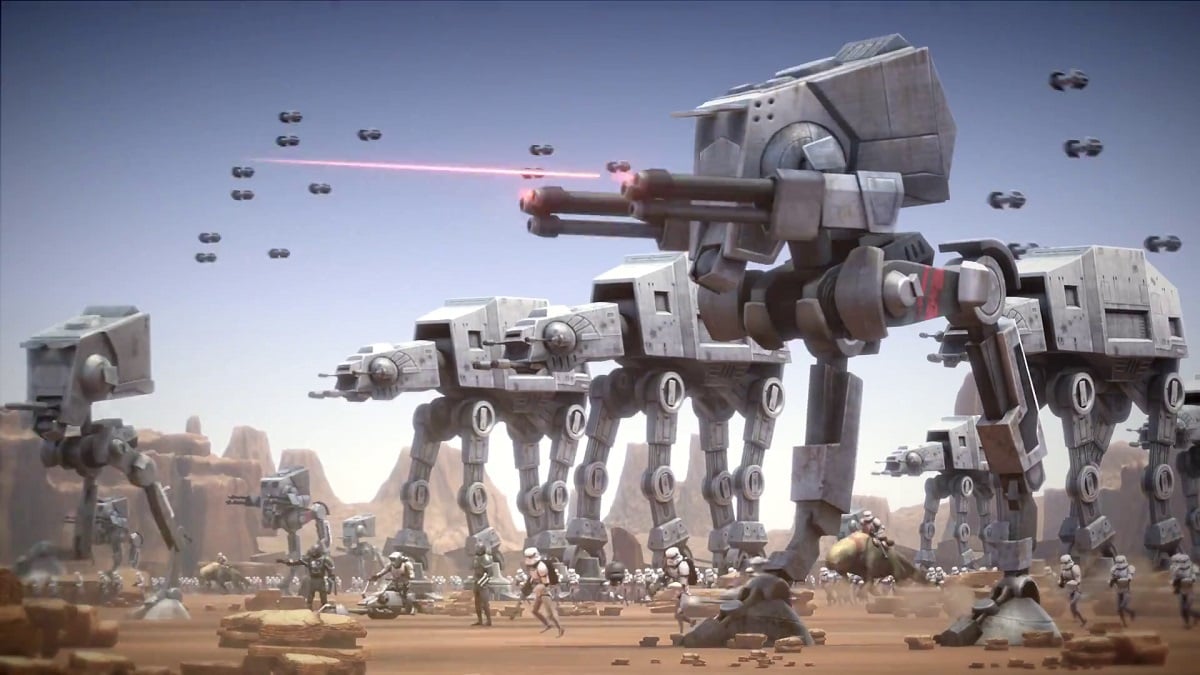The concept of giant mechanical “walkers” has long been a science fiction staple – beginning with the massive three-legged fighting machines, known as “Tripods,” that appeared in the 1898 H.G. Wells’ classic science fiction novel The War of the Worlds; and more famously the “All-Terrain Armored-Transports” (AT-ATs) of Star Wars Episode V: The Empire Strikes Back. Japanese anime and manga series also introduced “Mechs” or “Mecha,” bipedal giant robots that serve as the tanks of the future.
Despite their hulking size, walkers were indestructible – Star Wars fans certainly remember that it only took some tow cables to bring down the AT-ATs, while an army of teddy bear warriors proved more than a match for the smaller AT-STs (Scout Transports) in the subsequent film.
However, the Pentagon has explored the concept of walkers, most famously the Boston Dynamics BigDog, a quadruped robot that was designed as a load carrier for the infantry. The program showed promise, and BigDog and its successor LS3 (Legged Squad Support System) even became YouTube sensations. Yet, the program was discontinued in 2015.
Apparently, there are still opponents of the concept of a walker, reported Forbes.com this week.
“Legged machines are by no means doomed,” Alexander Kott of the U.S. Army Research Laboratory (ARL), lead researcher on a new project, told Forbes. “This technology needs more maturation, and with maturation will likely come better tradeoffs between adaptability and efficiency.”
Kott suggested that legs could match wheels and tracks for efficiency. He and his team recently published their findings in a paper, “From Cockroaches to Tanks: The Same Power-Mass-Speed Relation Describes Both Biological and Artificial Ground.”
The title is a mouthful, but the findings noted that “artificial ground-mobile systems–as diverse as ground robots, small utility vehicles, trucks, and tanks–exhibit a consistent regularity of relation among mass, power, and speed.”
The study found that optimally designed walkers could match wheels and tracks, and legs could offer advantages when crossing obstacles or steep slopes. Kott and his team also noted, “Today’s legged robots are significantly less efficient than animals or tracked and wheeled vehicles of comparable speed and mass. This, however, may be the inevitable price to pay to allow them to adapt to diverse and difficult terrains.”
While there are already highly specialized walkers that are used in industry, these move at very slow speeds and are essentially purpose-built to a task. Thus the future of walkers would still likely be something akin to BigDog as a tool to help move heavy equipment instead of being a replacement for tracked tanks.
“I doubt practicality of large legged machines, except in highly specialized contexts,” Kott added. “Scaling in size and mass brings serious issues of stresses in the elements of the legged machine. This, however, might change somewhat as new materials are developed.”
For now walkers and Mechs will likely just remain a concept that lives on in science fiction.
Peter Suciu is a Michigan-based writer who has contributed to more than four dozen magazines, newspapers and websites. He regularly writes about military small arms, and is the author of several books on military headgear including A Gallery of Military Headdress, which is available on Amazon.com.

